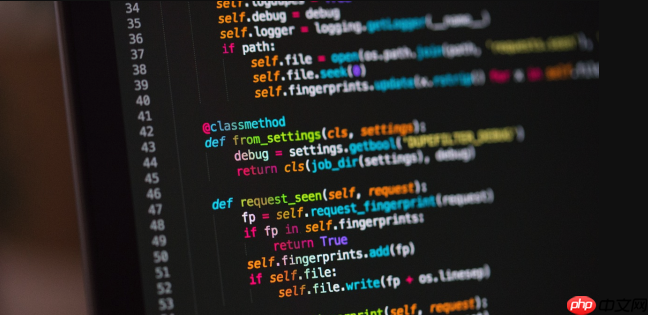throw关键字用于抛出异常,如除零时抛出std::runtime_error,由try-catch捕获处理,应在无效输入、资源失败等错误时使用,并合理处理性能开销。

C++ 中的
throw
throw
try-catch
C++
throw
throw
throw
std::exception
#include <iostream>
#include <stdexcept>
double divide(double a, double b) {
if (b == 0) {
throw std::runtime_error("Division by zero!");
}
return a / b;
}
int main() {
try {
double result = divide(10, 0);
std::cout << "Result: " << result << std::endl; // 这行不会执行
} catch (const std::runtime_error& error) {
std::cerr << "Exception caught: " << error.what() << std::endl;
}
return 0;
}在这个例子中,
divide
b
std::runtime_error
main
try-catch
try-catch
立即学习“C++免费学习笔记(深入)”;
throw
应该在函数遇到无法正常处理的错误情况时抛出异常。这通常发生在以下情况:
抛出异常的目的是通知调用者发生了错误,并让调用者有机会处理这个错误。
throw
异常通过
try-catch
try
catch
try {
// 可能抛出异常的代码
int* arr = new int[size];
if (arr == nullptr) {
throw std::bad_alloc();
}
// ...
delete[] arr;
} catch (const std::bad_alloc& e) {
std::cerr << "Memory allocation failed: " << e.what() << std::endl;
} catch (const std::exception& e) {
std::cerr << "An exception occurred: " << e.what() << std::endl;
} catch (...) {
std::cerr << "Unknown exception caught!" << std::endl;
}try
catch
catch
catch
catch (...)
catch
catch
当
try
catch
catch
catch
catch
catch
需要注意的是,异常处理是有代价的。过度使用异常处理可能会降低程序的性能。因此,应该只在真正需要的时候才使用异常处理。 例如,对于可以预见且容易处理的错误情况,可以使用返回值或错误码来处理,而不是抛出异常。
以上就是C++throw关键字使用方法解析的详细内容,更多请关注php中文网其它相关文章!

每个人都需要一台速度更快、更稳定的 PC。随着时间的推移,垃圾文件、旧注册表数据和不必要的后台进程会占用资源并降低性能。幸运的是,许多工具可以让 Windows 保持平稳运行。




Copyright 2014-2025 https://www.php.cn/ All Rights Reserved | php.cn | 湘ICP备2023035733号